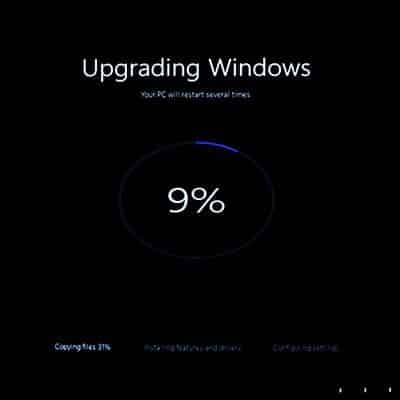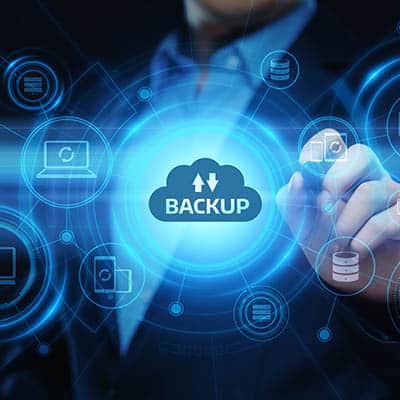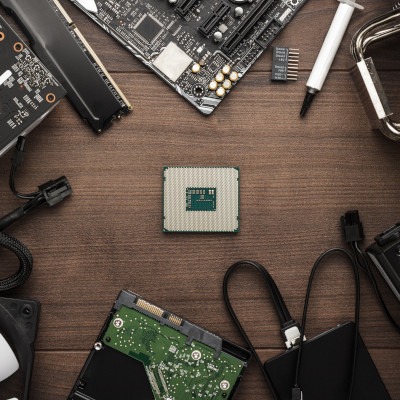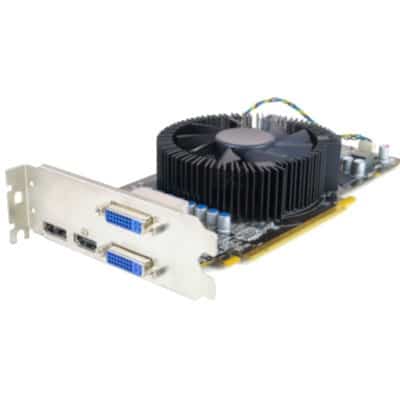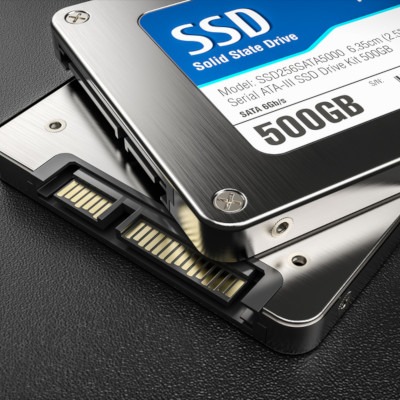Communications Considering that these devices are still technically telephones, it should be no wonder that communication is big in a smartphone – and that’s before we even consider their capacity to surf the Internet and send messages. These multipurpose communication tools can keep your team on the same page, collaborating efficiently and effectively. Mobile Applications Many mobile applications can be leveraged by your employees to continue their productivity, whether or not they are in your place of business. This mobility helps deliver value to your enterprise, as web-based resources accessed through a desktop’s browser were once the only real option for a worker to leverage. Mobile apps augment the opportunity for an employee to accomplish their goals. Utilizing mobile apps has become such a common business practice that many applications used by organizations have had mobile versions developed. As a result, your employees can more successfully collaborate with each other, as well as deliver the products and services you offer more efficiently. Therefore, operations and support are improved. Presumed Detriments Despite these benefits, many employers aren’t completely sold on encouraging smartphone use in the workplace. This makes some sense, as they could presumably become a bigger distraction than they are a benefit, hurting the business. Similar things are often said about social media. Many businesses have gone so far as to forbid the use of smartphones during work hours, their reasoning being that the more time spent on smartphones is equal to less time spent on their business. This reasoning has a few holes in it. The biggest one being the unsupported assumption that time equals productivity, which isn’t necessarily the case. Furthermore, this doesn’t account for the time that a smartphone could be used to the benefit of the business outside of normal working hours. BYOD and Mobile Device Management Of course, with businesses allowing smartphones to be leveraged, they need a way to make sure these devices are properly managed. Some businesses can provide their employees with company smartphones, but many just can’t afford to do that. This doesn’t leave these companies out of luck, however… the combination of mobile device management software and a policy known as a Bring Your Own Device (or BYOD) policy allows these businesses to oversee each device that connects to their network. Depending on the policy, this can cover only the applications and data that the company requires/controls, while others extend to the entire device. These platforms enable administrators to retain control over the wireless network, enforcing permissions and keeping the company’s data secure. Think of it as a content filtering system that works on your employees’ devices, whitelisting and blacklisting applications that serve company purposes or serve as distractions, respectively. SRS Networks can help you leverage the capabilities of a mobile device in your business. For assistance in implementing mobile device management, reach out to us at (831) 758-3636.
As you are probably aware, there are no download button on these sites, so you have to utilize third-party software to facilitate this process. At first, it may seem a little more trouble than it’s worth, but there are web-based tools designed to make this process simpler. Let’s take a look at how to get this done with Twitter, Facebook, and Instagram. Disclaimer: It is crucial that you know the copyright laws of your country before downloading videos from social media. The mere ability of a video to be downloaded doesn’t necessarily mean that it is legal to download it from the web. Twitter To start the process of downloading from Twitter, first you have to click on the arrow in the left-hand corner of the video and select Copy link to Tweet. Go to the SaveTweetVid website where you can enter the copied URL in the textbox and your Twitter video download should start automatically. Alternatives on mobile come in app form including Video Downloader for Twitter. Facebook Facebook has a save video option, but that doesn’t download the file to your computer. You will want to click on the three-button menu on the top right of any video and select Copy link. Open Getfvid and paste the link in the text box. To use an app for this purpose check out Video Downloader for Facebook. Instagram As you’d imagine, Instagram works in a similar fashion. Go to the three dot menu on Instagram video you’d like to download, select Copy Link from the menu and enter it in DownloadGram. If you want to use an app on Android, download InstaSave from Google Play. For more great tips and tricks, visit our blog regularly.
Let’s consider Windows 7 for a moment. There’s a reason that it is still so popular among users, despite being a decade old… In many ways, the operating system still holds up. Let’s face it – the transfer from Windows 7 to Windows 8 back in 2012 was a bit of a bust as well, so is it really that surprising that it has happened again? What Made Users Pass Up a Free Upgrade? One of the major sticking points that prevented Windows 10 from being a runaway success was the discomfort many felt with some of the default settings, which included features and services that many found controversial and intrusive. Basically, users felt the amount of data collected by Microsoft through Windows 10 was excessive. Many found issue in the fact that their conversations can be listened in on, thanks to the introduction of Cortana to the Windows experience. Unless the user specifically deactivated Cortana in their settings, Cortana would be listening at all times. While this is a necessity for a voice-activated anything to work, it does open up questions about what additional information Cortana could collect. This wasn’t all that was collected, either. The world’s biggest software company also collected the following information: Bing search queries Private communications Microsoft support requests Error reports Third-party data Other Differences Between Windows 7 and Windows 10 One frustration that users who did make the switch discovered was that Windows 10 didn’t have any software installed to play a DVD by default, requiring the user to find and install a program for themselves. While this may not have made much of a difference in the grand scheme of things, it was still an inconvenience. Another difference between the operating system’s versions was that updates were suddenly pushed onto the patching system, making them automatic. These are just two small examples of the changes made between Windows 7 and Windows 10, but it does help us to understand why Windows 10 wasn’t a running success as was anticipated: people are resistant to change. Even if an upgrade is free, a user isn’t going to be motivated to switch away from an operating system that they like and are comfortable with. Why Business Users Now Have to Migrate After being around for a full decade, Windows 7 is finally being retired. Microsoft is ending support for Windows 7 on January 14, 2020. This means that there will be no more security updates, and therefore the vulnerability of any system still running Windows 7 after that point will increase exponentially. Windows 10, on the other hand, will still receive security updates, which is one reason why users are making the switch. Of course, this isn’t the only feature that Windows 10 has to offer. They also provide: Virtual desktops Advanced screenshots Built-in security Dynamic Lock Scheduled restarts and updates When a change is made to software, it is almost always a good thing. This isn’t to say that it isn’t an intimidating leap to make, and SRS Networks understands this. That’s why we’re here to help you acclimate yourself to Windows 10, and migrate your systems over before January 14. Call us at (831) 758-3636 to get started.
Disasters have many forms. The first step to excellent disaster recovery planning is knowing what you are preparing for. These are scenarios that could affect your business without warning. Equipment Failure – You arrive at the office, hit the power button on your computer and go grab a cup of coffee. You come back and your computer didn’t turn on, so you hit the power switch again, but nothing happens. Your PC’s motherboard has fried. Imagine losing the entirety of documents, files, and contacts on your computer. This could happen at any given moment to any of us. The only way to avoid catastrophic data loss is by expecting it to happen and being prepared. Staff Unavailability – Bob has been working on a company project for months on end but has told coworkers numerous times that he is unsatisfied with his role within the company. His project is a key element in the companies next steps to success. One day, Bob stops showing up to work without notice. Does your business’ disaster recovery plan accommodate for unexpected staff unavailability whether it be an accident, a personal emergency, or a situation like Bob? User Error – Bob’s replacement, Rob, is taking over the company project. It’s ready to be presented and implemented. Rob accidently deletes the files when trying to transfer them to another device. A simple accidental deletion could quickly turn into a disaster without proper planning. Don’t let poor planning rob your business. Natural Disasters – When you hear disaster, this is likely the first thing that comes to mind. Natural disasters affect nearly every part of the world. Whether it’s a 100-year-flood that strikes unexpectedly, a hurricane that veers off of its projected path, or even something as simple yet devastating as high winds; your disaster recovery planning should accommodate situations as destructive as these. Malware – Malware is the most technologically advanced scenario mentioned thus far. These evolved viruses constantly plague businesses across the globe. Staying vigilant and having a successfully tested disaster recovery plan means these vicious disasters transform into an annoyance rather than a business-destroying attack. True Planning Means Thorough, Possibly Risky Testing A plan as previously mentioned is a proposal of a course of action you will take in the event of, in this case, disaster. Proposing a course of action is only the first step in disaster recovery planning. The second step is testing this plan. Which would you prefer: testing your recovery plan in the wake of a disaster, or testing your recovery plan long before a disaster strikes? There are many different ways to evaluate the proposed processes outlined in your disaster recovery plan. These include the following: Walkthrough Test: A walkthrough test is a simple way to review and share your disaster recovery plan. It allows you to discuss the plan with everyone involved and revise it as needed. Walkthrough tests are quick and should occur regularly to remind employees of your procedure and inform them of any changes that have been made. Tabletop Test: You are your own character in this tabletop game. Each team member is given the same hypothetical disaster and must explain their role in recovering. This test should be elaborate and realistic to aid in unveiling possible shortcomings in the disaster recovery plan. Parallel […]
Efficient Team Collaboration Probably the most important consideration of rolling out a cloud platform for your business is the collaborative benefits that it brings. Since the cloud applications, infrastructure, or storage is hosted on computers outside your business and accessed through a web client or web browser, they can provide support for multiple users at a time. Many of these constructs allow for real-time collaboration irrespective of the users’ geographical location. User Tip: To get the most out of your team, consider adding in software that comes with mobile apps that allow for collaboration from smartphones. Productivity, Productivity, Productivity Studies have shown a major bump in productivity with the use of cloud. In fact, productivity for small businesses can improve operational efficiency up to four times. This means that four times as much can get done than with traditional computing structure. This uptick is largely fueled by the increased speed each task can get done with their collaborative features. User Tip: To boost productivity, cloud computing platforms have to be managed effectively. While cloud providers mainly handle the maintenance and security of the cloud resources your company uses, ensuring that someone is in charge of keeping files and resources managed properly is important. Save or Re-organize Capital For the business owner, this is undeniably the major reason to commit to cloud computing. You can save money in several ways. Firstly, you don’t have to roll out a server, and the thousands of dollars that accompany that whole process. Instead you just pay for the computing that you use for any given month. This is very attractive for businesses that need to scale their computing needs up and back frequently. The second way a business saves money with the cloud is in management and security. By playing for cloud services, you curtail a lot of management costs that are typically associated with having enterprise software. Your business gets the latest version of the software, providing access to all new features, and security patches, as they happen. The final way your business saves money is on the actual hosting of the hardware. Utility costs like electric and HVAC can cost companies a pretty penny. Those costs are rolled into the solution drastically reducing operational expenses and the space needed to properly host large centralized computing systems. Overall, a business’ cloud resources can be looked on as an operational cost, making it easier to manage. User tip: if you are looking at migrating your company’s computing to the cloud, start small. This ensures that the cloud is right for your company. For example, if your industry operates under strict regulations, public cloud platforms may hinder your business’ ability to comply with these mandates. Dipping your proverbial toe in the cloud pool to see how it affects your business is a solid practice. If you’d like to talk to one of our IT professionals at SRS Networks about expanding your business’ reliance on cloud computing, call us today at (831) 758-3636.
May Citrix – May 2, 2019 Citrix, a conferencing and digital workplace software company revealed that hackers gained access to the company’s internal systems between October 2018 and March 2019. Data stolen included Social Security numbers, financial information, and data of current and former employees. AMC Networks – May 3, 2019 Names, email addresses, subscription details and other information of 1.6 million users of AMC Network’s Sundance Now and Shudder streaming services were left exposed through a database that was left unsecured. Freedom Mobile – May 9, 2019 Canadian mobile provider Freedom Mobile had an estimated 1.5 million customers’ personal and financial information left exposed on a third-party server. The types of data left exposed included names, email addresses, mailing addresses, dates of birth, and credit card information. Indiana Pacers – May 13, 2019 The business team behind the National Basketball Association’s Indiana Pacers was the victim of a phishing attack. The information that was exposed included names, addresses, dates of birth, Social Security numbers, passport numbers, driver’s license numbers, medical insurance information, card numbers, digital signatures and login information. No number of affected individuals has been given by the team. WhatsApp – May 14, 2019 The Facebook-owned app WhatsApp has experienced a security flaw that provided access to an Israeli government surveillance agency, NSO Group. NSO Group had limited access to the microphone, camera, and WhatsApp message text of the app’s 1.5 billion users. Instagram – May 20, 2019 Another Facebook-owned property, Instagram had a breach that exposed more than 49 million Instagram influencers, celebrities, and brands’ Instagram information when an Indian-based social media marketing company left it exposed. Canva – May 24, 2019 139 million users of Canva, a cloud-based graphic design tool, had their names, usernames, and email addresses exposed when hackers infiltrated their server. First American Financial Corp. – May 24, 2019 A leading title insurer for the U.S. real estate market, First American Financial Corp. had 885 million customers’ Social Security numbers, bank account numbers, mortgage and tax records, wire transaction receipts, and driver’s license images exposed for all customers as far as back as 2003. Other May breaches: Inmediata Health Group, Uniqlo, Wyzant, Flipboard, Checkers (the fast food chain). June Quest Diagnostics – June 3, 2019 Almost 12 million patient records have been compromised when hackers took control of the payments page of AMCA, a major payment vendor for Quest Diagnostics. Data such as financial account data, Social Security numbers, and health information (ePHI) were left exposed. LabCorp – June 4, 2019 In the same hack, LabCorp announced that 7.7 million of its customers were impacted. Emuparadise – June 10, 2019 The gaming website Emuparadise had their users’ IP addresses, usernames, and passwords exposed in a data breach. Evite – June 11, 2019 More than 100 million users of the Evite event planning app have had their information put up for sale on the dark web. Information that was stolen included names, email addresses, IP addresses, and cleartext passwords. Some even had their dates of birth, phone number, or postal address exposed. Total Registration – June 11, 2019 Kentucky-based Total Registration, a facilitator of scholastic test registrations had their entire service compromised. Victims, who were mainly students who had registered for PSAT and Advanced Placement tests, had their names, dates of birth, grade level, […]
What Are the Different Types of IT Services? There are three different approaches you can take for your business’ IT needs. You can hire an IT consultant, host your own IT staff, or pay a set fee with an MSP. IT Consultant An IT consultant will charge you hourly and is a more reactive measure to IT dilemmas. Typically, you will reach out to an IT consultant once a problem has actually occurred. This means your company suffers from downtime while you wait for the problem to be resolved. On-site IT An on-site IT team is relatable to a managed service provider in the sense that it is a more proactive approach. These two work to prevent problems from occurring in the first place. However, with an on-site IT staff, you are still paying hourly; and your hourly staff is more beneficial leveraging the skills to the benefit of your business rather than focusing on IT. Managed IT Services MSPs are the superior option due to their fixed fee arrangements and proactivity. They give your company greater freedom to focus on core business matters. There is no need to divert your attention to IT-related tasks with a managed service provider. MSPs have the experience needed to properly see the needs of your sized business. Is My Business Too Small for an MSP? Part of an MSP’s responsibility is to identify your business’ needs and create a strategy to fulfill them. Managed Service Providers offer the most cost-effective IT strategy for any business, of any size. MSPs provide 24/7 detection your business otherwise would not be able to detect. This means your MSP will be able to tell you when your server is failing, or your hardware is crumbling. MSPs allow you to fix the issue before it ever becomes a problem. They also offer 24/7 monitoring and patch management which can prevent your hardware from crumbling in the first place. Prevention is the most cost-effective strategy your business can utilize. The traditional approach, “fix it when it breaks” which meant paying for expensive technology malfunctions and issues as they occur, has been left behind with the introduction to affordable and proactive managed IT services. SRS Networks Offers Your IT Solution Whatever industry your business operates in, SRS Networks offers IT solutions that leverage your investment. MSPs are the future of IT. To learn how you can outsource your IT and benefit from our services, talk to our professionals at (831) 758-3636.
Deciding on a Brand The brand of PC can actually mean a lot to people, but most of the PC manufacturers like HP, Dell, Lenovo, Asus and Acer use the exact same components and parts. It isn’t until you are looking to buy a top-of-the-line PC that things get significantly different. With laptops, however, brand can make a difference. HP and Microsoft have options for high-end graphic design computers, while those two and Lenovo have specialized pens for artists. If you really want an idea of what a device is capable of, reading as many user reviews as possible will give you the perspective you need to make an informed decision. Full-Size Desktop vs Compact Desktop Desktop computers typically come in two options: Compact or Tower. The full-sized tower cases are good for high-end computing that needs more cooling and places for expandable hardware additions, while smaller compact desktop cases are good for office workstations that won’t need constant upgrades to function. Read Reviews and Benchmarks Computers are everywhere and, as a result, there are dozens of websites dedicated to testing, reviewing, and featuring computer hardware. Before you make any large purchases, it may be good for you to start your due diligence on YouTube or Google, finding professional and user reviews for the hardware you are considering. Ugh, Bloatware Most new computers come pre-configured with software sponsored by the manufacturer. While most of this software is harmless, it takes up space on your machine and doesn’t need to be there. Remove this software before deploying the machine for its final purpose. Eliminating Your Old PC Once you get to a point where you can start using your new PC, you need to take a minute to consider how to dispose of your old machine. For the business owner or IT admin, throwing away a computer without first wiping or destroying the hard drive can potentially put your company at risk. Some industries have strict regulations about how devices have to be destroyed, so make sure that you are aware of your responsibilities on that front. If your plan was to recycle your computer, swapping out the hard drive is probably the best plan. There are many organizations that are constantly looking for people and businesses to donate computers to less-fortunate people. Unfortunately, if you want to go this route, it will likely cost you more money, as you will want to swap out the hard drive. Does Your Business Need PCs? If you need to talk to someone about procuring a computer for your company, SRS Networks can help. Call our certified experts today at (831) 758-3636.
Multi-Monitor Display? Most computers you’ve used have had a single screen, but there are people out there with over 10. How do they manage that? With the built-in support of the OS that you are using. If you are interested in having more than one display, you need to take a few things into consideration. One consideration you will have to make is how many display out ports your PC has. If you only have one single port, you need to find a way to get other displays to connect to your new machine. Some of the common connections you will see include: VGA: The standard for a long time, these older connections have an isosceles trapezoid connector with little pins that have screws that connect the wire to the machine. All older monitors will have these connections, but most desktops have at least one VGA port to make sure they are compatible with older monitors. HDMI: HDMI is the same connection that you use to connect your streaming player, Blu-Ray player, or gaming console to your TV. These are the standard in A/V equipment at the moment as it broadcasts both audio and video. DisplayPort: DisplayPort is similar to HDMI. It can carry both video and audio, and it’s set to become the standard connection. For our purposes though, you can think of DisplayPort and HDMI as very similar. Budget desktops will demand that you have a solid understanding of the many ports of the device, as it would only cost you more money by purchasing monitors that aren’t compatible with it. Some types of devices will even need specific connectors and adapters. Integrated Video vs Dedicated Graphics Depending on what you are doing with your computer, you may need to incorporate a graphics card rather than relying on the functionality that is built into the motherboard. Most PCs built for office productivity, however, won’t need anything like that. Machines that are earmarked for video production, graphic design, engineering software, and the like, will. The more strain you are going to put on your system’s graphics, the higher the price will get. Some high-end graphics cards can cost nearly $1,500. Most graphics card chipsets have multiple models, and since many companies like to sell their own brands of hardware, it can be a little intimidating to browse all of your options. If you are looking for a solid graphics card–and don’t have to concern yourself with 3D rendering or video editing–standard grade cards will do. For the most part, unless you’re using a computer for extremely specialized tasks, your desktop’s built-in hardware will more than suffice. Do You Need Monitors for Your Desktops? You can be overwhelmed by the amount of options and specifications of monitors. The two variables to concern yourself with are resolution and refresh rate. Here are some key factors to consider for both: Resolution: The resolution of a monitor is how many pixels it can display. Most desktop monitors will render in a 16:9 display ratio, or widescreen. This is the current standard, but there are ultra-wide monitors that use more advanced display ratios like HD, FULL HD, Ultra HD, or 4K. HD: HD is the most common resolution, and it’s commonly known as 720p. It is the standard for budget laptops. FULL HD: Full […]
Data storage has come a long way over the past few decades. Floppy disks were the norm… once. They could only store about 1.44 MB of data, enough to hold large text files, but impossible for just about anything else. CDs were the next big hit at about 650 MB of data, while a DVD can hold around 4.7 GB. A single DVD can hold as much data as 3,342 floppy disks. Blu-Ray can store 10 times as much data as a DVD. Google’s data storage exceeds 15 exabytes, or 26.2 million Blu-Ray disks. How Your Usage Changes Your Storage Needs You first need to think about how your storage will be used. For example, many organizations have networks that they plug their devices into, meaning they don’t need as much on-board storage. Some utilize the cloud for storage and application access, further removing them from the confines of requiring on-board storage. If either of these are the case for you, then you only need enough for the operating system and some wiggle room on the hard drive. If the usage is more personal in nature, or if you’re even an amateur gamer or video producer, then you will want much more on-board storage. HDD vs SSD There are two major forms of device storage: hard disk drive (HDD) and solid state-drive (SSD). Here is a little bit about each: Hard Disk Drives (HDD) Hard drives are components in your computer that store data. These mechanical drives utilize tiny electric motors, a spinning stack of magnetic platters, and a small arm to read and write data. This is all housed within a heavy metal construction. Think record players, but for data storage. HDDs are great for storing large amounts of data, but they aren’t as fast or energy efficient as alternative choices. Still, they are cheaper due to the fact that they are more prone to hardware failure, but they do have their benefits. Many laptop manufacturers avoid putting HDDs in their devices to preserve their battery usage. Solid State Drives (SSD) SSDs are electronic without having any moving parts. Data is recorded electronically, allowing for a more expensive, but faster, more efficient, and more reliable option than HDD storage. Since they are electronic rather than mechanical, they experience less wear and tear, leading to reduced chances of hardware failure and data loss. SSDs, however, have a more limited capacity, and since they are more expensive than HDD, the price climbs for more expensive drives. What Are Your Storage Needs? You should start by thinking about whether or not you would benefit from an SSD. If you don’t use your PC for much, then you might be able to get away with less storage–around 128-to-256 GB. If your data is stored on the office network, you can shoot for even lower. If your computer is for personal use, you should seek somewhere between 512 GB to 1 TB. Depending on where you get the computer, you might find that the storage doesn’t influence the PC as much as other components, like CPU or RAM. You will probably need some kind of additional hard drive storage down the road, so we recommend utilizing an SSD for your operating system supplemented by an HDD for data storage. A gaming PC in particular […]



